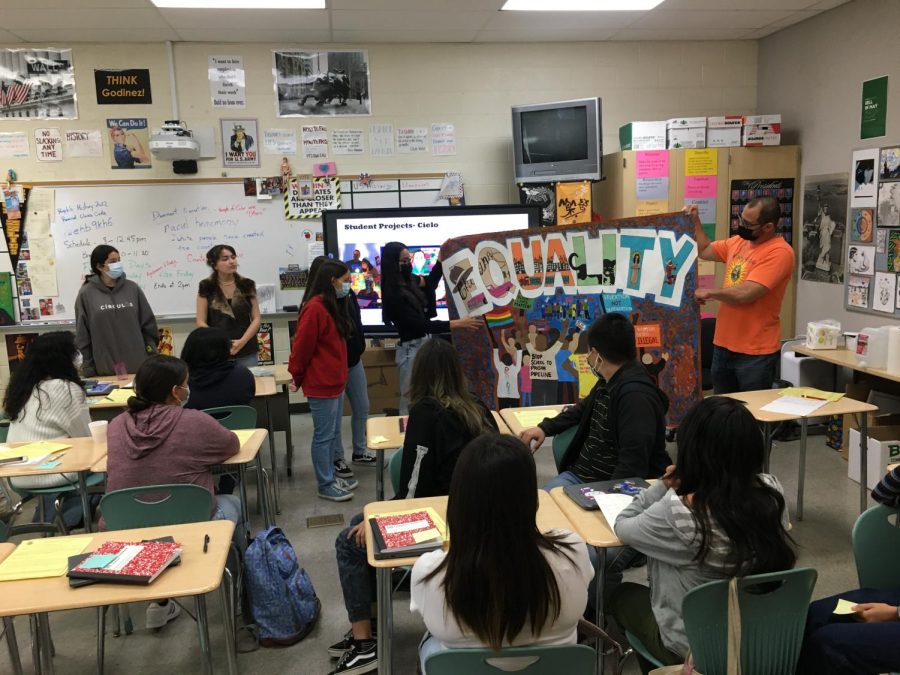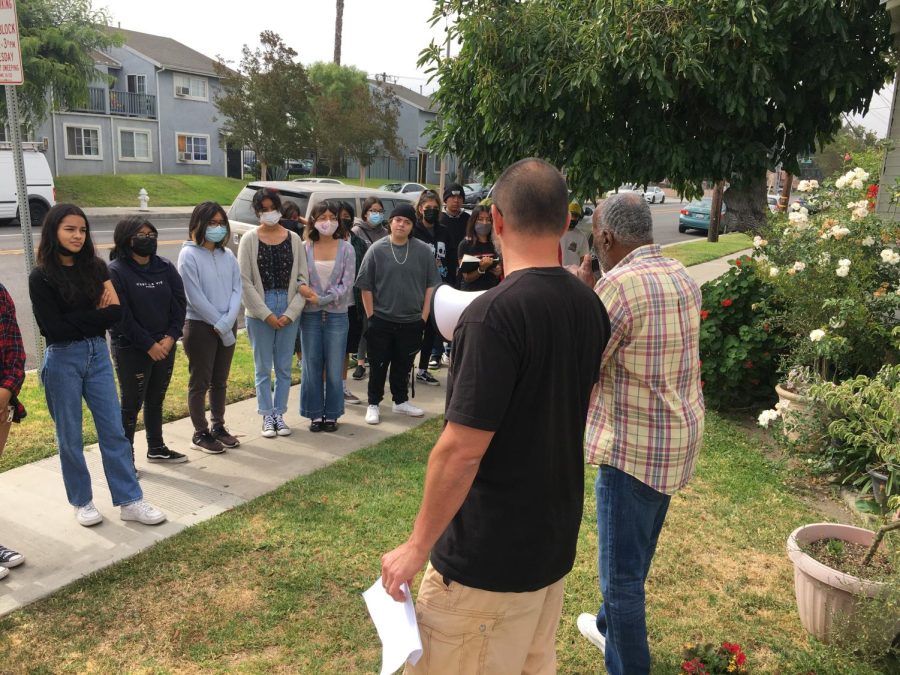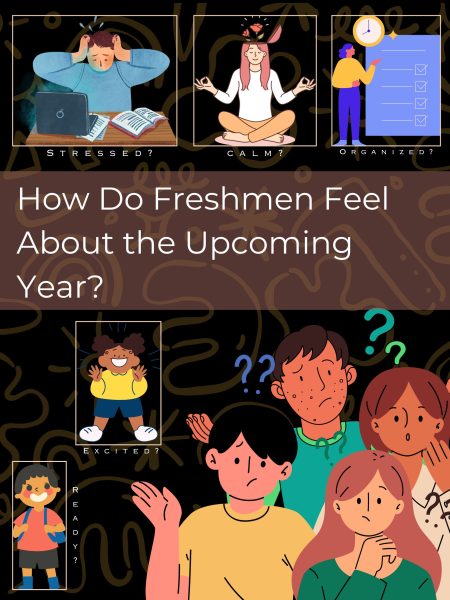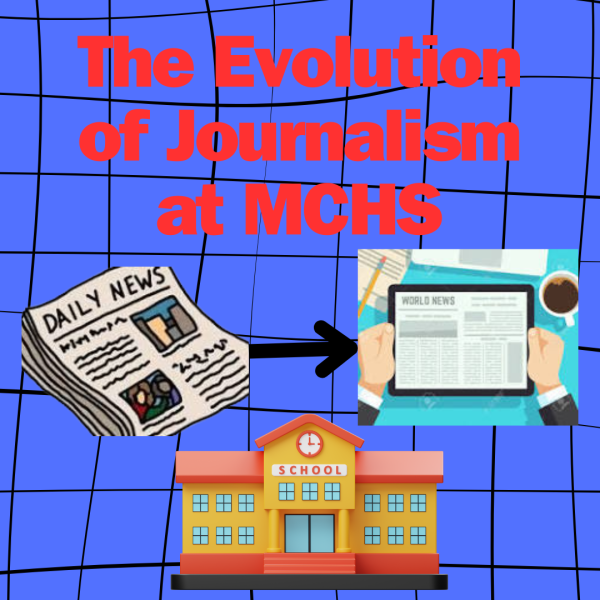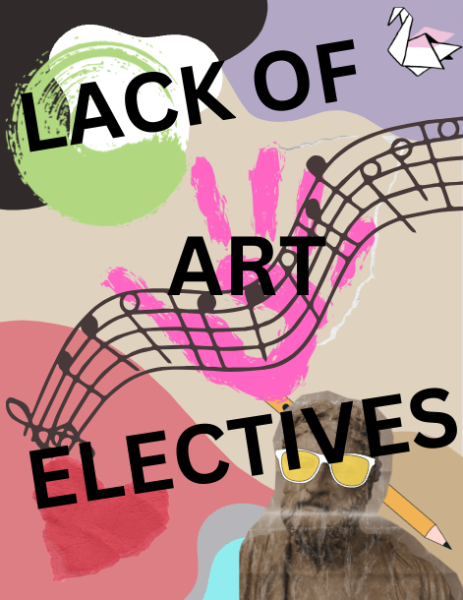Teaching the truth
Students in the summer enrichment program, People’s History of Orange County, learn to create artwork that implements activism and artistry.
The Black Panther Party, the Brown Berets, the occupation of Alcatraz Island, and the Executive Order 9066 are repressed aspects of history. However, with the passing of Assembly Bill 101 in 2021 by Gov. Gavin Newsom, there is a high school graduation requirement that enforces taking an ethnic studies course for future graduating classes. This in turn, will address these topics and empower students.
Ethnic studies is defined as: “The contributions of minorities and how far we’ve come in this country, but how far we still have to go,” said U.S. History teacher Rafael Ramos.
Social and political issues are dominating our everyday lives, however they aren’t talked about in school.
Ramos said, “Ethnic studies is also about being honest with students about the obstacles that they will have to navigate as they enter a four year school and in their career.”
In not being able to address these topics, it affects the physical and mental well-being of many individuals as they aren’t sharing or communicating the way they feel.
“The impact that it [racism, sexism, discrimination, etc.] has on us is horrific because it causes a lot of internalized trauma, which leads to outward actions that are negative towards ourselves and our family. It’s like a downward spiral,” said Roselinn Lee, the social studies curriculum specialist at SAUSD.
UCLA Chicano Studies major students, Andreanela Ordoñez and Isabel Ortega, describe their experiences learning eurocentric history in high school.
“I didn’t care when it came to high school [history] because I got that [inclusive history] through Santa Ana College since the professors developed multiple perspectives. Overall, I wanted to learn about my people, the things that occurred in my family’s history, how it was tied to our history,” said Ordoñez.
Students’ expectations are unmet as the topics aren’t diverse. Erasing the narratives of minorities from textbooks has grave consequences leading to a sense of unworthiness or being irrelevant.
Ortega said, “The connection was missing. I was only intrigued by specific history, those small snippets where we were actually part of history. However, with the removal in the textbook, I don’t feel like we were part of the story.”
In terms of the expectations for the ethnic studies courses, Lee said, “It’s a healing class because you understand why you second guess yourself. It’s a way of getting students to talk about their reactions to this knowledge, discuss what to do with it, and to establish a class of co-creation.”
However, the ethnic studies curriculum before the requirement wasn’t as welcoming or strategically planned out.
“The curriculum was limited at first; the district wasn’t supporting it with funding, so there were no textbooks or resources, and it was difficult to seek assistance,” said Ramos.
During that time, Ramos only taught one ethnic studies course and relied a lot on doing his own research to present material to his class.
Now however, there have been added changes in our district.
“[There are] 38 different educators and over 3000 students taking the class,” said Lee.
She even admits to the whole situation being nerve wracking as she is running out supporting all the teachers. In addition, there is also a designated course textbook, “A Different Mirror” by Ronald Takaki.
Outside of the school curriculum, Lee has also been involved in the development of programs, such as the People’s History of OC.
“It was my first introduction to learning about different cultures and learning about my own. I presented a project and created a website including the work of the people who took the course,” said Ortega.
The summer enrichment program studies the communities of color in and around Santa Ana and learns about their histories, cultures, and contributions.
Senior Fatima Del Carmen said, “The program was very fun and eye opening. It made me realize that nothing was fair and I felt mad all the time. I wanted to take a stand at something to make an improvement.”
This is where the creation of a new club started —Santa Ana Youth Activism.
“The purpose is to bring awareness into the different ethnic groups, make people aware about the continued injustices, to have the same feeling I had and to make an impact which can make a difference in the long run,” said Del Carmen.
SAYA particularly aims to educate club members and others on national issues and connect them to local issues in order to be more connected to the city of Santa Ana.
Ramos said, “The club can provide opportunities to take the class a little bit farther. Teachers don’t have enough time [in class] to cover everything, it serves as the ‘vehicle for involvement.’”
Youth want to be a part of the community and to take an initiative.
Senior Alexxander Gutierrez said, “I wanna feel like I am a part of a movement, that I’m creating change, and making someone’s day by embracing their culture with them.”
SAYA takes inspiration from ethnic studies and has much to offer.
“It’s a club that offers something to everybody, even if you feel like it’s not for you. Everyone that participates can learn in the club; it can open a new perspective which can open up your world to you,” said Ramos.
As a final message, Del Carmen said, “Remember to always speak up for any injustice you see, your voice matters, and the only way that we can make a difference is speaking up.”
































